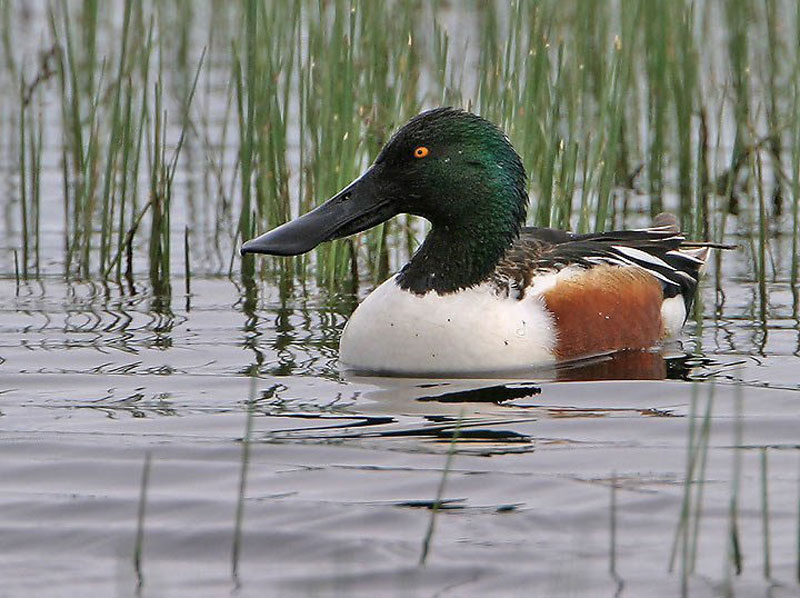Northern shoveler: Red Data Book of Armenia

Ducks, geese and swans — Anatidae
Status. A casual migrant throughout a year. Listed in the IUCN Red List of Threatened Species (ver. 3.1) as Least Concern. According to IUCN criteria categorized as Vulnerable VU B1ab(iii)+2ab(iii).
Distribution. Distributed in Eurasia from the Atlantic Ocean to the Pacific Ocean, Africa, Asia Minor, South Caucasus, Central Asia, Mongolia, North America.
Distribution in Armenia. Occurs during the spring and autumn migrations in the Lake Sevan basin, on Lake Arpi and in wetlands of the Arax riverside.
Habitats. Before water subsidence it nestled only on the Lake Sevan. During migrations it can be recorded on the lakes Sevan and Arpi and the reservoirs of Akhurian, Aparan and Spandarian. Preference is given to water bodies with open surface and lush riparian vegetation.
Biological traits. The nest is built on the ground nearby the open water, beneath the shrubs. Eggs are pale white, 7–11/clutch, size 48–58 mm. The brooding period is 22–23 days. Hatchlings are very skilled in swimming and diving.
Population size and its trends. During the spring and autumn migrations shovelers live mostly on natural and artificial water bodies of the Arax riverside, in much lower numbers (10–15 individuals) also in the Lake Sevan basin.
Major threats. Nesting grounds in the Lake Sevan have disappeared. Disturbance in the Arax riverside. Fishing and poaching.
Conservation measures. Protected in Sevan National Park and Lake Arpi National Park. The rise of water level in the Lake Sevan would likely lead to the recovery of nesting grounds. It is essential to estimate population size throughout a year, identify suitable nesting sites and ensure their conservation, strengthen anti–poaching activities during migrations and wintering and to declare the Armash fish ponds an Important Bird Area.
Suggestions
 The Ministry of Environment sent a letter international partners to draw their attention to the real danger of environmental disasters as a result of Azerbaijan's large-scale aggression towards the territory of Armenia
The Ministry of Environment sent a letter international partners to draw their attention to the real danger of environmental disasters as a result of Azerbaijan's large-scale aggression towards the territory of Armenia
 Vicia pisiformis: Red Data Book of Armenia
Vicia pisiformis: Red Data Book of Armenia
 Vavilovia formosa: Red Data Book of Armenia
Vavilovia formosa: Red Data Book of Armenia
 Trigonella capitata: Red Data Book of Armenia
Trigonella capitata: Red Data Book of Armenia
 Trigonella astroides: Red Data Book of Armenia
Trigonella astroides: Red Data Book of Armenia












